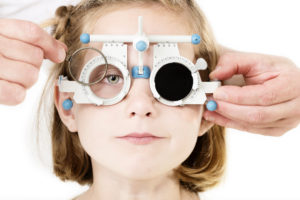May 3, 2021

By Dwight Akerman, OD, MBA, FAAO, FBCLA
Yazdani and co-researchers conducted a meta-analysis to compare the effect of full-correction versus under-correction on myopia progression. A literature search was performed in PubMed, Scopus, Science Direct, Ovid, Web of Science, and Cochrane library. Methodological quality assessment of the literature was evaluated according to the Critical Appraisal Skills Program. The meta-analysis included six studies (two randomized controlled trials [RCTs] and four non-RCTs) with 695 subjects (full-correction group, n = 371; under-correction group, n = 324) aged 6 to 33 years.
The researchers concluded that myopic eyes, which are fully corrected with non-cycloplegic refraction with maximum plus sphere, are less prone to myopia progression than those under-corrected. Interestingly, in the two studies with cycloplegic refraction included in the meta-analysis, under-correction significantly reduced myopia progression compared with full-correction. However, the researchers point out that the results of the two studies with cycloplegic refraction may not be comparable with the other four non-cycloplegic studies due to various study limitations.
Although the results show a statistically significant difference in myopia progression comparing under-correction and full-correction, in either cycloplegic or non-cycloplegic groups, this difference might not be clinically significant. Further RCTs are needed using cycloplegic refraction, which serves as the gold standard for precise refraction, to understand better the relation between the amount of correction and myopia progression.
Abstract
Under-correction or full-correction of myopia? A meta-analysis
Negareh Yazdani, Ramin Sadeghi, Asieh Ehsaei, Ali Taghipour, Samira Hasanzadeh, Leili Zarifmahmoudi, Javad Heravian Shandiza
Purpose: To compare the effect of full-correction versus under-correction on myopia progression.
Methods: A literature search was performed in PubMed, Scopus, Science Direct, Ovid, Web of Science, and Cochrane library. Methodological quality assessment of the literature was evaluated according to the Critical Appraisal Skills Program. Statistical analysis was performed using Comprehensive Meta-Analysis (version 2, Biostat Inc., USA).
Results: The present meta-analysis included six studies (two randomized controlled trials [RCTs] and four non-RCTs) with 695 subjects (full-correction group, n=371; under-correction group, n=324) aged 6 to 33 years. Using cycloplegic refraction, the pooled difference in mean of myopia progression was – 0.179 D [lower and higher limits: -0.383, 0.025], which was higher but not in full correction group as compared to under correction group (p=0.085). Regarding studies using non-cycloplegic subjective refraction according to maximum plus for maximum visual acuity, the pooled difference in myopia progression was 0.128 D [lower and higher limits: -0.057, 0.312] higher in under-correction group compared with full-correction group (p=0.175). Although, difference in myopia progression did not reach significant level in either cycloplegic or non-cycloplegic refraction.
Conclusions: Our findings suggest that myopic eyes that are fully corrected with non-cycloplegic refraction with maximum plus sphere are less prone to myopia progression, in comparison to those which were under corrected. However, regarding cycloplegic refraction, further studies are needed to better understand these trends.
Yazdani, N., Sadeghi, R., Ehsaei, A., Taghipour, A., Hasanzadeh, S., Zarifmahmoudi, L., & Shandiz, J. H. (2020). Under-correction or full correction of myopia? A meta-analysis. Journal of Optometry.
DOI: https://doi.org/10.1016/j.optom.2020.04.003













